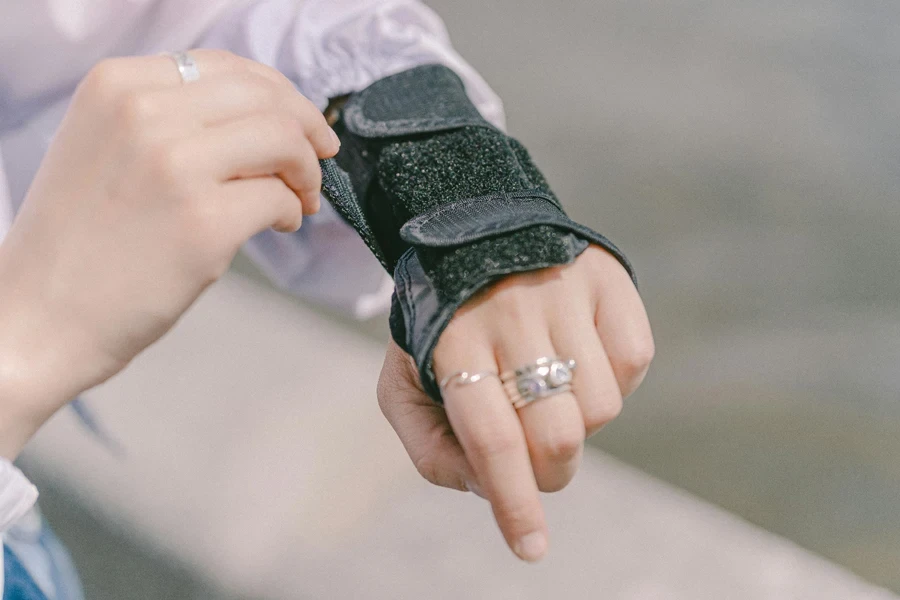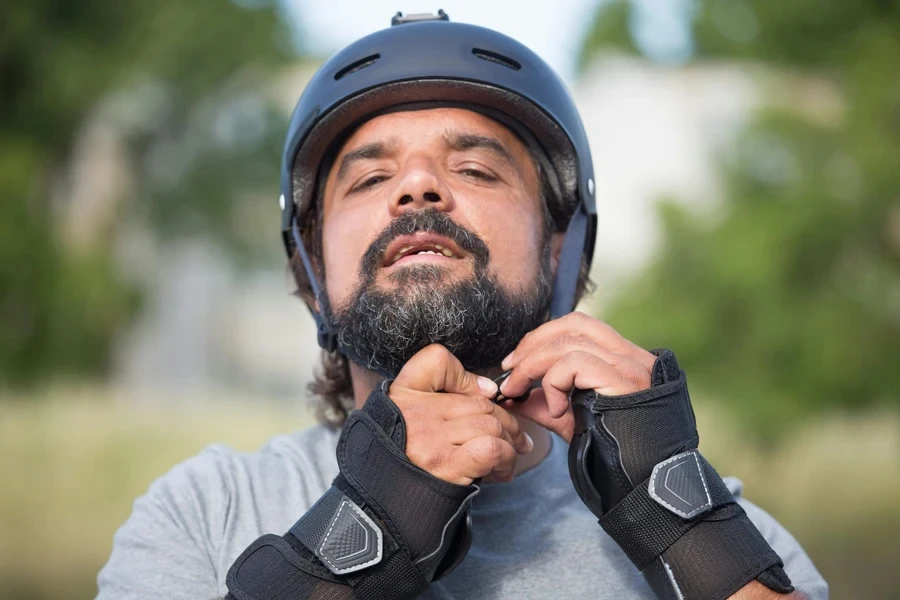Wrist braces play a crucial role in injury management, offering stability and aiding recovery while enhancing everyday comfort for those dealing with chronic or acute wrist conditions. For professional buyers navigating a dynamic market driven by innovation and growing consumer demand, understanding trends and product variations is vital for making informed decisions. This guide provides a detailed exploration of market insights, brace types, and expert selection tips to ensure optimal outcomes.
Table of Contents
● The booming wrist support market: Trends and insights
● Breaking it down: Types of wrist braces and their unique benefits
● Finding the perfect fit: Key considerations when choosing a wrist brace
● Conclusion
The booming wrist support market: Trends and insights

Market size and growth potential
The global orthopedic braces and supports market, which includes wrist braces, was valued at $3.6 billion in 2023 and is projected to reach $5.1 billion by 2029, growing at a compound annual growth rate (CAGR) of 5.9%, according to MarketsandMarkets. This growth is primarily driven by an increased prevalence of sports injuries, rising awareness about injury prevention, and the growing demand for off-the-shelf orthopedic solutions.
Key players and regional dominance
Leading companies such as 3M, Ossur, and Bauerfeind dominate the market, leveraging advanced manufacturing and design capabilities. North America remains the largest contributor to the market, with a robust healthcare infrastructure and growing adoption of orthopedic solutions for musculoskeletal conditions. Emerging regions like Asia-Pacific also show rapid growth, fueled by increased healthcare investments and a higher incidence of wrist-related injuries.
Emerging trends and innovations
Key innovations shaping the wrist brace market include smart textiles, which integrate monitoring capabilities for real-time health data, and the expansion of e-commerce platforms, making these products more accessible globally. Additionally, advancements in lightweight materials and adjustable designs are enhancing user comfort and compliance, further driving market growth.
Breaking it down: Types of wrist braces and their unique benefits

Sleeves: Lightweight comfort for mild conditions
Wrist sleeves are crafted from materials like neoprene, elastic polyester, or advanced breathable fibers designed to provide targeted compression. This compression enhances blood circulation, reduces swelling, and alleviates mild discomfort. Many sleeves include gel-infused supports that massage the wrist during movement, offering additional relief from inflammation or strain. With anatomic contouring, these braces fit snugly without restricting movement, making them suitable for all-day wear.
Splints: Rigidity for severe cases
Splints are equipped with semi-rigid or fully rigid stays constructed from lightweight metal alloys or durable thermoplastics to limit wrist motion and protect against further injury. These braces are ideal for fractures, post-operative care, and severe arthritis as they reduce stress on affected areas while ensuring proper alignment. Modern designs often incorporate dual-strap systems that stabilize the wrist from both the dorsal and palmar sides, ensuring even distribution of support pressure. Additionally, the inclusion of padded linings minimizes irritation for sensitive skin during prolonged use.
Wraps and straps: Simple solutions for active lifestyles

Wraps and straps feature elastic or neoprene bands that provide adjustable tension, allowing for customized stabilization. These braces include low-profile closures for convenience and are designed to maintain neutral wrist positioning, reducing the risk of strain during repetitive tasks or sports activities. Some advanced wraps integrate shock-absorbing pads or textured compression zones that increase tactile feedback, further stabilizing the joint during high-impact movements.
Combination braces: Comprehensive support for complex conditions
Combination braces combine the rigidity of splints and the flexibility of sleeves to deliver multi-faceted stabilization. These designs often include removable stays, allowing users to adjust between rigid and semi-rigid configurations based on recovery needs. Advanced models incorporate multi-directional strapping systems, which provide a tailored fit while securing multiple areas such as the thumb, palm, and wrist. Materials like high-grade thermoplastics and breathable laminates are used to ensure durability without compromising comfort, making them ideal for severe instability or multiple injuries.
Finding the perfect fit: Key considerations when choosing a wrist brace

Level of support needed
Selecting the right wrist brace begins with understanding the level of support required based on the condition. Mild support options like sleeves or wraps are ideal for conditions such as minor swelling, tendinitis, or mild instability, providing gentle compression to promote circulation. Moderate support braces, often equipped with semi-rigid stays, are better suited for conditions like arthritis or moderate sprains. Maximum support braces utilize rigid components such as metal stays or hard plastics to immobilize the wrist, which is essential for post-operative care, fractures, or severe joint instability.
Material matters
The material composition of a wrist brace significantly influences its comfort and effectiveness. Neoprene offers excellent compression and warmth, which is beneficial for chronic conditions like arthritis but may cause discomfort during prolonged use due to reduced breathability. Breathable mesh fabrics are lightweight and moisture-wicking, making them suitable for extended wear and sports use. For immobilization needs, thermoplastics or lightweight aluminum stays provide the rigidity required to stabilize severe injuries while maintaining durability. Advanced designs also incorporate anti-microbial coatings to enhance hygiene.
Size and fit
An accurate fit is critical to ensuring the effectiveness of a wrist brace. Measurements should include both wrist circumference and the widest part of the hand to match sizing charts provided by manufacturers. Many braces feature adjustable straps, allowing for customized tension to accommodate swelling during recovery. For conditions requiring extended wear, braces with anatomic contouring reduce pressure points and improve overall comfort, preventing irritation.
Lifestyle compatibility
A wrist brace should align with the user’s daily activities and environment. For individuals involved in physical labor or sports, braces with reinforced support and shock-absorbent features are more effective in reducing strain. Professionals requiring continuous hand use may benefit from designs that provide stability while allowing full finger mobility. For post-surgery recovery, braces with removable stays allow for progressive adjustment as healing progresses.
Budget and value
Cost-effectiveness is an essential consideration, particularly for bulk purchases. Entry-level braces may offer basic features, but multi-use capabilities such as removable components and dual support options justify higher initial costs by reducing the need for additional purchases. Medical-grade compression and advanced materials like silicone gel pads or breathable laminates often provide better long-term value due to their durability and enhanced user compliance.
Conclusion

Selecting the appropriate wrist brace is essential for ensuring optimal comfort, effective recovery, and enhanced functionality in daily activities. By carefully evaluating factors like support level, material, fit, and lifestyle compatibility, businesses can meet diverse consumer needs while maximizing product effectiveness. Consulting with professionals when addressing complex conditions can further ensure the best outcomes for users.




